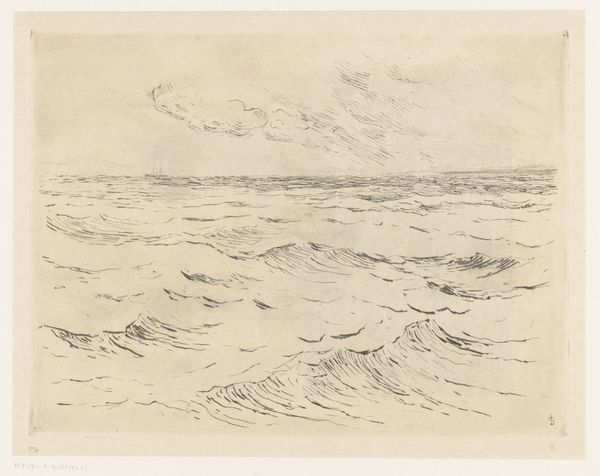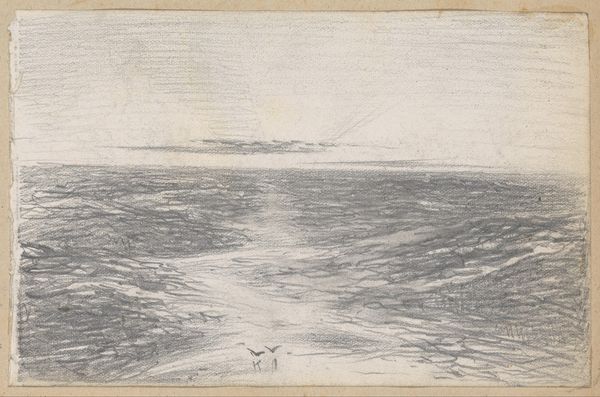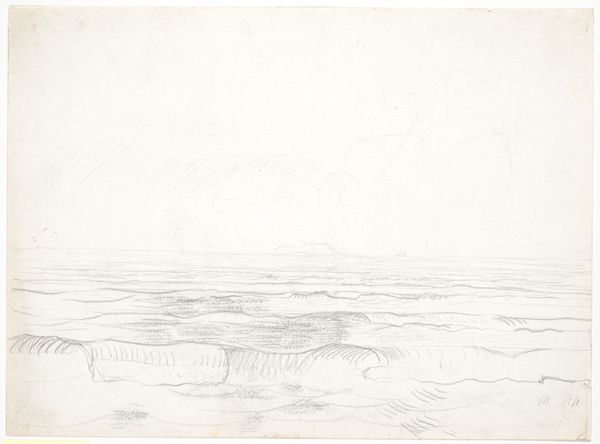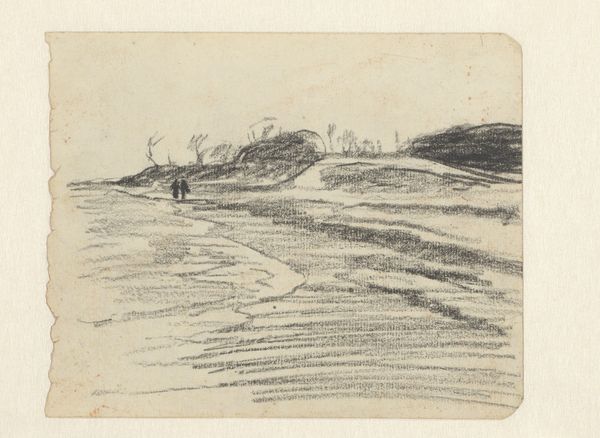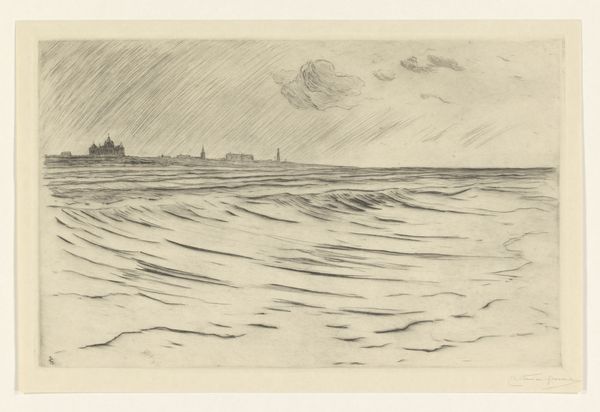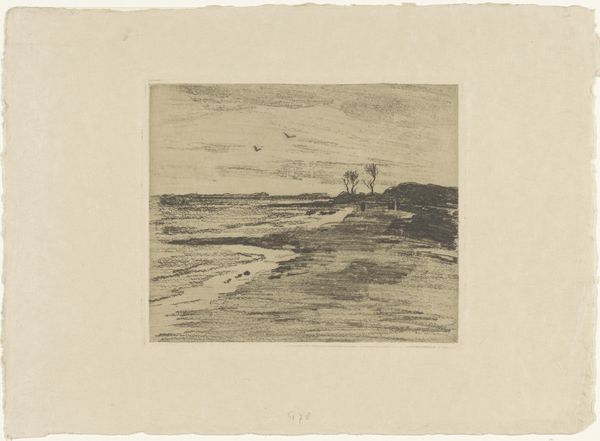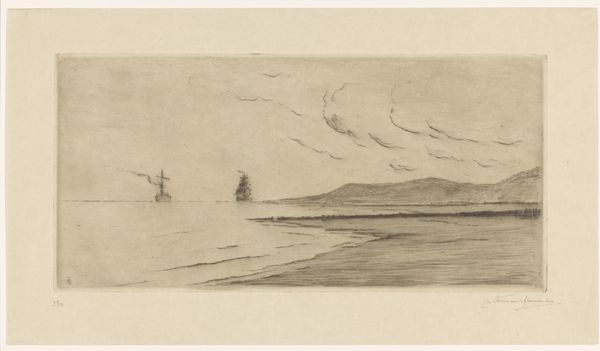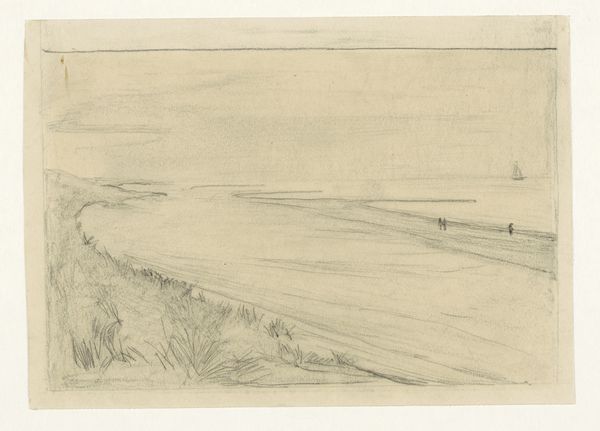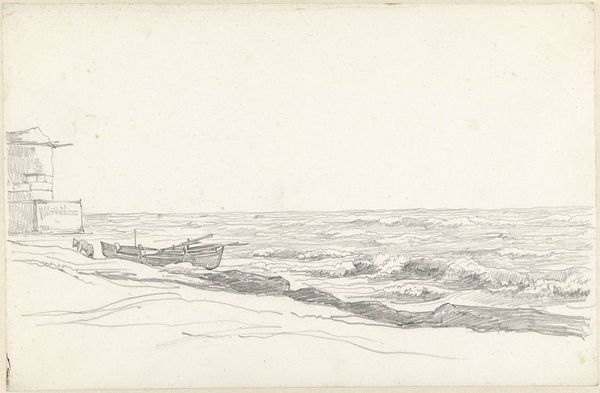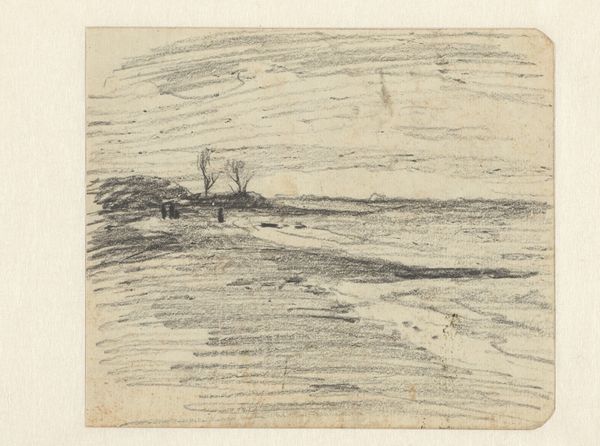
drawing, pencil
#
pencil drawn
#
drawing
#
pencil sketch
#
landscape
#
pencil drawing
#
pencil
#
northern-renaissance
#
realism
Dimensions: height 285 mm, width 460 mm
Copyright: Rijks Museum: Open Domain
Curator: Standing here, we have before us "De es," a pencil drawing by Pieter de Josselin de Jong, created sometime between 1871 and 1906. It is currently held in the collection of the Rijksmuseum. Editor: It strikes me as… windswept. Bleak, even. There’s a sense of emptiness in this landscape that makes you consider how this space would impact daily life. Curator: The location depicted definitely holds a specific place within its context. The “es,” elevated farm fields, played a crucial role in early agricultural practices. By understanding the landscape management and agrarian reform of that time, we can understand what daily life actually looked like. Editor: I hadn't considered the "es" itself as a political landscape! But now that I look again, that pathway, that almost violent division of planes in the land is now a path into how societal changes, perhaps unfair labor laws or agricultural reforms could change. The somber, overcast sky—could that symbolize an oppressing societal burden or the natural burdens of working the land? Curator: Certainly. And the relatively low horizon line further accentuates the expansiveness of the sky, possibly drawing our gaze—and perhaps our hopes or fears—upward. De Jong’s realism seems particularly fitting here; a romanticized landscape would be inappropriate when confronting what likely equates a place of hard labor, social and even geographical isolation. Editor: De Jong captures a certain loneliness here. It's interesting how a relatively simple pencil drawing can invoke such profound social commentaries, such personal interpretations of despair, resilience, labor. Curator: Precisely. The piece engages viewers by reminding us to question what these environments symbolize about both historical moments, but as our personal interactions within any physical spaces. Editor: Absolutely. Thank you for sharing that lens to appreciate "De es.” Now the pencil drawing, with its delicate and stark marks, seems even more urgent and moving.
Comments
No comments
Be the first to comment and join the conversation on the ultimate creative platform.
